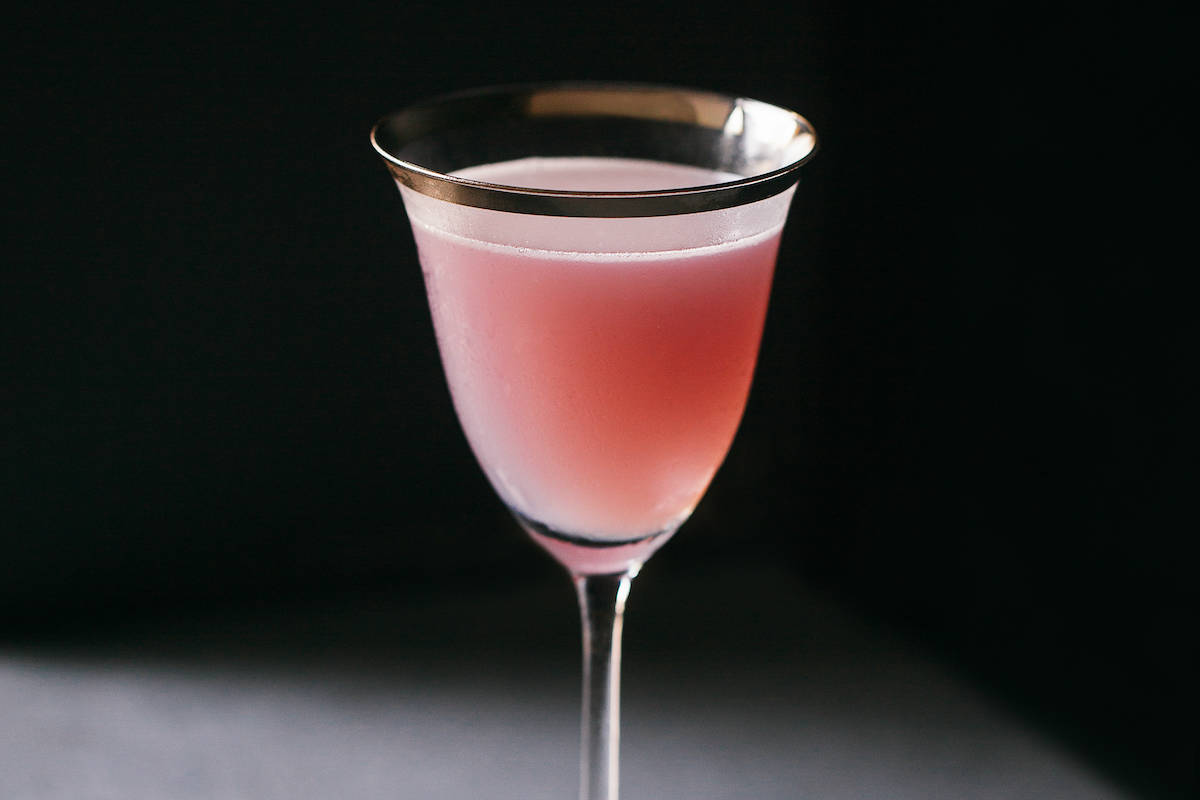Butterfly pea flower may sound like just another mysterious but good-for-you ingredient that pops up in drink descriptions at expensive juice bars. But over the last year, it’s begun to appear on cocktail menus nationwide. Naturally, this raises the question: what the heck is butterfly pea?
To decode this cryptic component, I spoke to Will Piquette, who serves as the principal bartender at Alcove in Boston. I figured that Piquette should know a thing or two, as butterfly pea is used in the bar and restaurant’s Embassy of the Dolphins cocktail, pictured above.
“It’s a naturally occurring flower, and it has a natural dye that when introduced to any kind of acid—like lemon juice, lime juice, or even just pure citric acid—changes from blue to more of a fuchsia,” Piquette says. “It’s been around forever, and it’s one of those quirky cocktail ingredients that has a bit of natural funk to it.”
In the case of Embassy of The Dolphins, Piquette infuses orange curacao with butterfly pea flowers, which initially turn the liqueur a bright shade of blue. After the flowers are strained out, the curacao is combined with Absolut Elyx Vodka, Benedictine, and lemon juice. The acidity of the lemon juice reacts with the butterfly pea-infused curacao on contact, changing the drink to a vibrant shade of lilac-fuchsia.
What butterfly pea doesn’t change is flavor, so long as it’s not the only element in play.
“If you were to infuse it in water, it would be this subtle, flowery, vegetal sort of characteristic, but because of the other flavors that are much more pronounced, it becomes a negligible addition,” Piquette says.
While Piquette introduces butterfly pea to the drink through a spirit infusion, he’s seen it applied in other ways.
“I know that some people have taken [butterfly pea] and added it into an ice cube, so that the drink changes over time. Or it’s poured over the top of a cocktail to introduce that kind of mystical, magical, color-changing property.”
You don’t need to be a principal bartender yourself to try it at home. According to Piquette, home bartenders can look for herbal tea blends that incorporate butterfly pea, or purchase the flower directly in flower or powder form on Amazon. (Or, for an even easier route, you can pick up a bottle of Empress 1908 Gin, which counts butterfly pea blossom among its eight botanicals.)
Before long you may have a color-changing cocktail on your hands, no food dye required.
“It’s a naturally occurring food dye. We’ve been trying to figure out how to make things have pretty colors for a long time, and this is the natural way to do it as opposed to doing it through synthetic means,” Piquette says.



